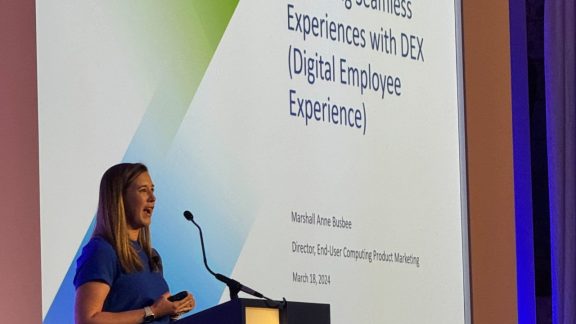First things first: we definitely do not think you’re a dummy. We happen to think you are quite innovative, forward-thinking and possibly ready to shake things up a bit within your agency’s IT infrastructure and culture.
 Now that we’ve gotten that out of the way, please allow us to introduce “The Government Digital Workspace for Dummies,” a VMware special edition guide to designing and deploying secure digital workspaces from the world’s most highly secure IT environments: government agencies.
Now that we’ve gotten that out of the way, please allow us to introduce “The Government Digital Workspace for Dummies,” a VMware special edition guide to designing and deploying secure digital workspaces from the world’s most highly secure IT environments: government agencies.
There’s a lot of talk, a lot of thought leadership directed toward this concept of a digital workspace. But what does that mean, exactly? To VMware, the term “digital workspace” stems from today’s modern—and mobile—approach to managing data, applications and identities across devices. VMware enables agencies to deploy digital workspaces by virtualizing the very same IT applications, workflows and operational models typically found within a traditional physical workplace. You know, the kind of workplace with fluorescent lighting, cubicles, client-server PCs and landlines.
[Related: Q&A: Sanjay Poonen Explains the Magic of the Digital Workspace]
Government agencies—more than any private sector service—truly stand to gain the most out of adopting digital workspaces. While military and defense agencies may have to abide by a different set of rules, regulations and best practices than, say, civilian agencies at the local level, the infrastructure that powers a mobile government workforce is not limited by agency type. In other words, all agencies—from the Department of Defense and CIA to local law enforcement and transportation authorities—qualify for and benefit from digital workspaces.
[Related: End-User Computing Stories for Government]
The primary outcome of a digital workspace is workforce mobility, which means empowering personnel with remote access to government resources. Unlike a traditional workspace built from the client-server computing model (with applications, workloads and users tightly intertwined with physical hardware), the digital workspace relies on the cloud and other mobile technologies to enable secure remote access to government resources across devices and locations. This modern approach to computing not only addresses mobility’s influence in today’s workplaces but also embraces IT modernization to improve service delivery, mission outcomes and internal operations.
Easier read here than done, right?
Implementing any type of workforce mobility within an agency takes steps—multiple steps—and this guide offers high-level guidance, advice and best practices for designing a digital workspace and reframing the conversation from where agency employees get work done to how employees get work done across devices, locations, time zones, applications and networks.
Change agents drive transformation by focusing on organizational effectiveness, improvement and development. More so than ever before, IT is the modern-day change agent for many organizations. Ready to become your agency’s change agent?
Download “The Government Digital Workspace for Dummies” to begin.







